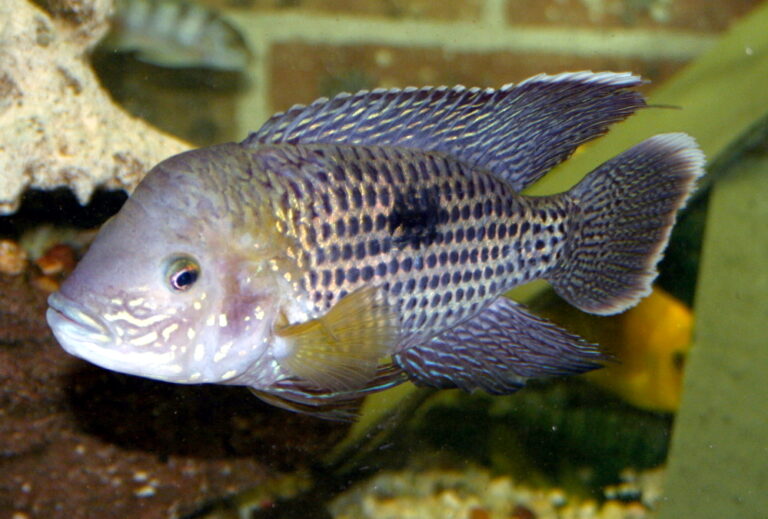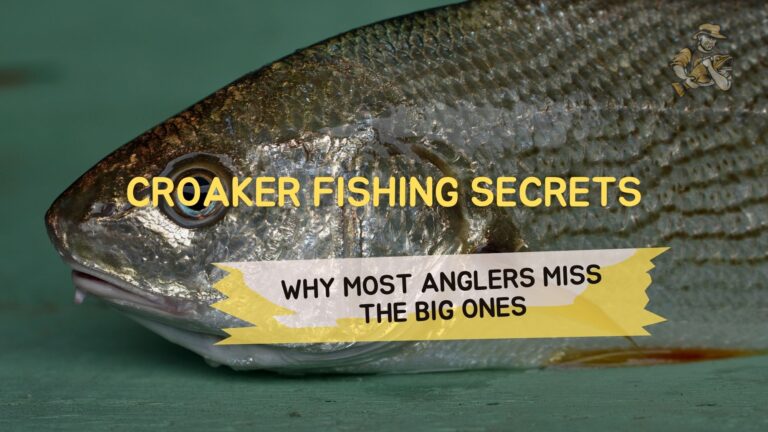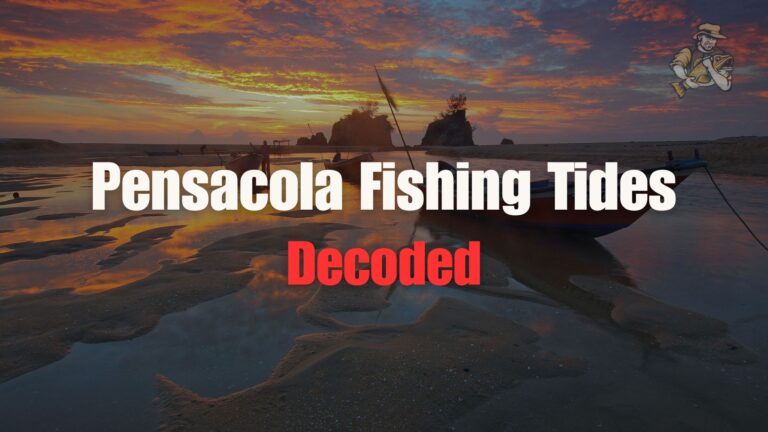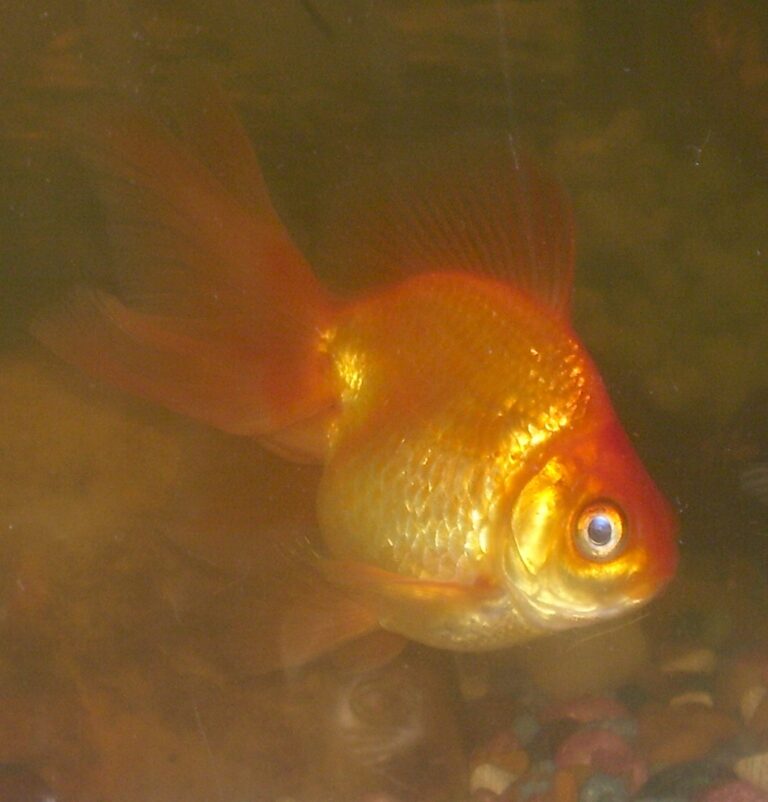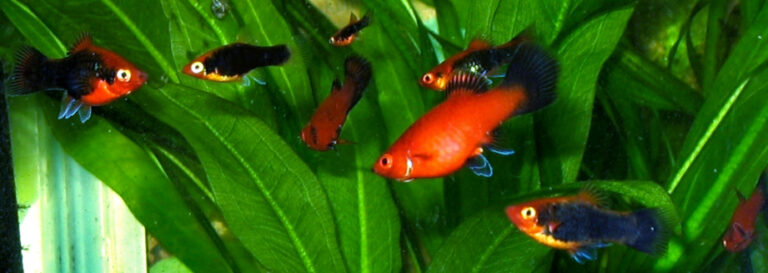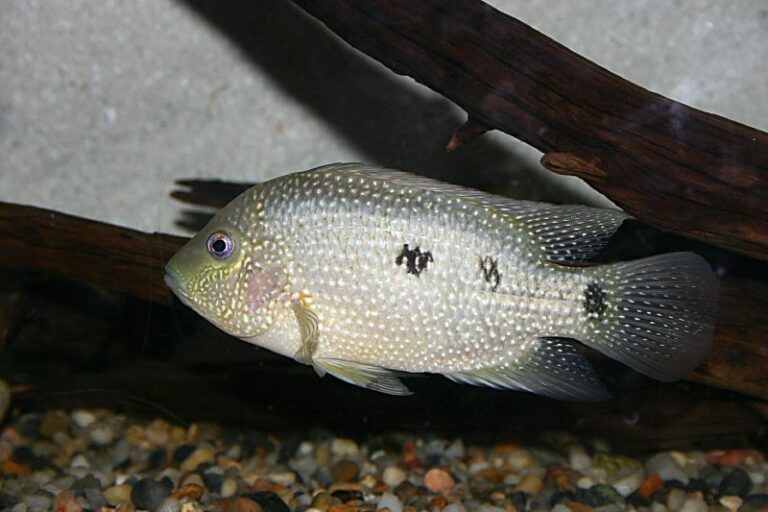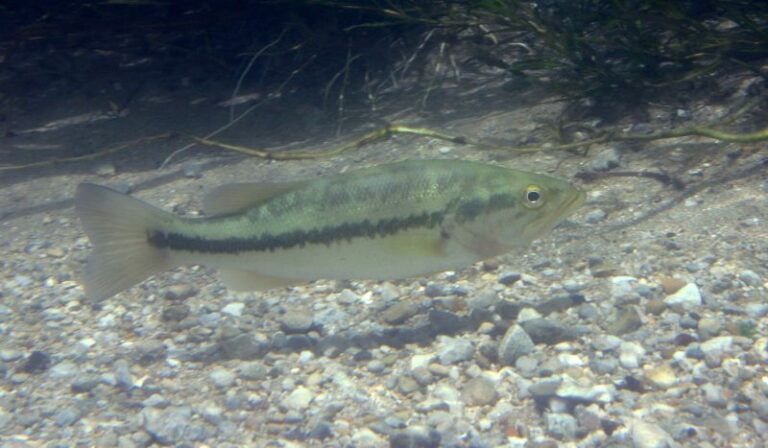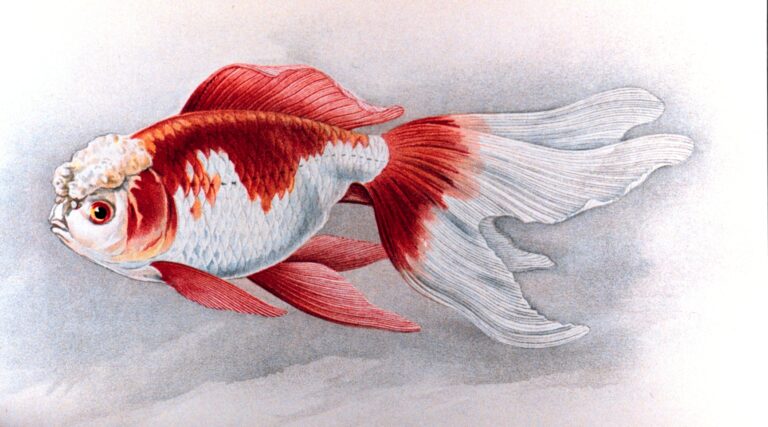Walleye vs Bass: Different Strategies for Freshwater Predators
By Adam Hawthorne | Last Modified: May 17, 2025
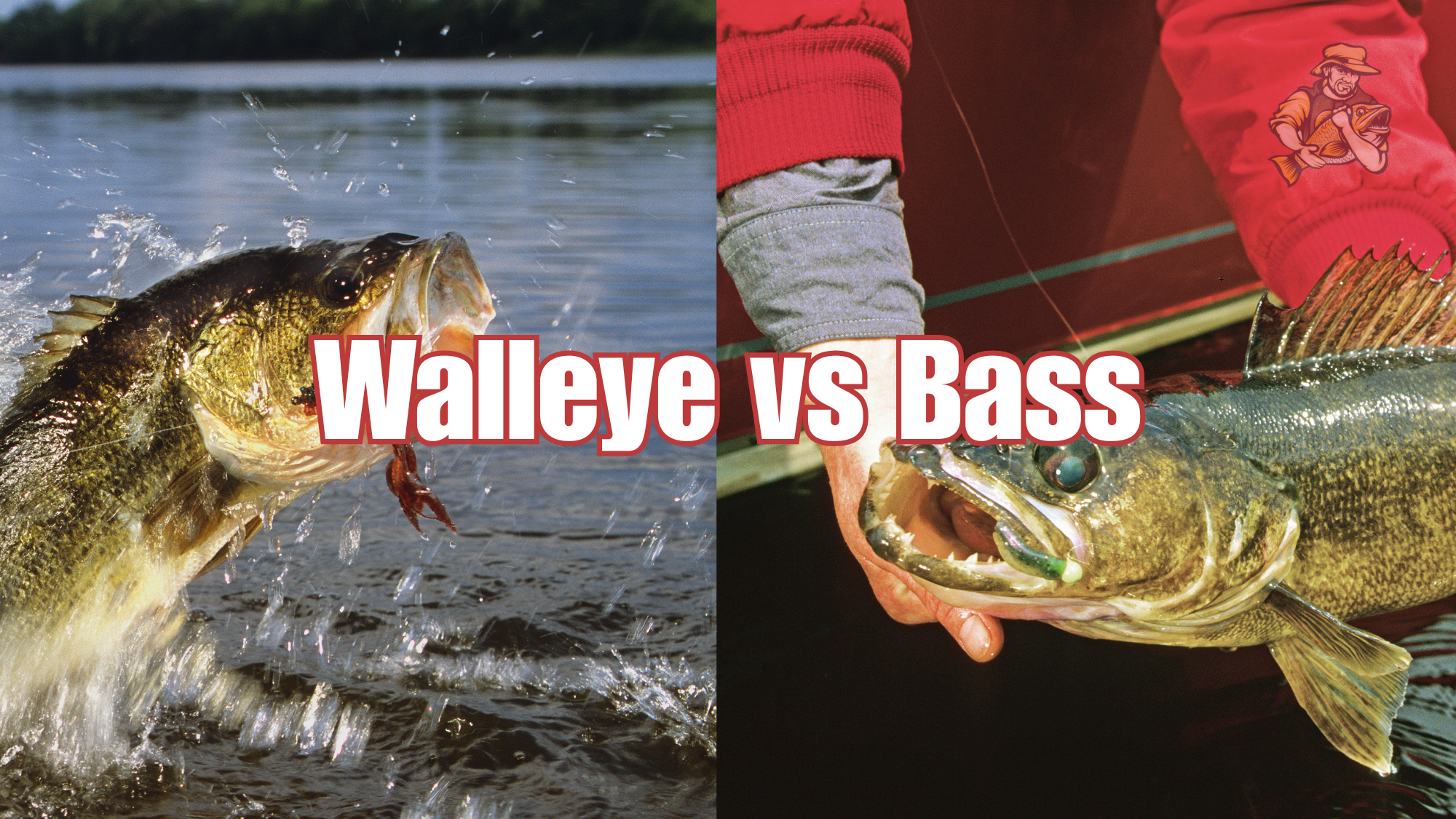
I still remember my first dedicated walleye trip back in 2009. After fifteen years of chasing mostly bass, I was convinced my usual tactics would transfer easily – what works for one predator should work for another, right? Three days on Lake Erie with not a single walleye to show for it quickly humbled me. My buddy Jim, who’d been catching his limit daily while I flailed around with bass lures, finally took pity and showed me the light.
“You’re fishing for the wrong species with the wrong approach in the wrong places,” he laughed, handing me a bottom bouncer rig that looked nothing like anything in my tackle box.
That experience taught me that while both walleye and bass are freshwater predators, the differences in how you target them successfully can be night and day. If you’re primarily experienced with one and looking to branch out to the other, this guide will save you from making my embarrassing mistakes.
The Fundamental Differences Between Walleye and Bass
Before diving into specific tactics, it’s crucial to understand how these species differ in behavior, habitat preference, and feeding patterns. These biological differences directly impact how you should approach fishing for each.
Behavior and Senses
Walleye have earned their reputation as the “night shift” predators of freshwater lakes and rivers. Their eyes contain a specialized membrane called the tapetum lucidum that reflects light and gives them exceptional vision in low-light conditions. This makes them most active during dawn, dusk, and nighttime hours, or in deeper, darker water during bright days.
In contrast, largemouth and smallmouth bass are primarily visual feeders most active during daylight hours. They lack the enhanced night vision of walleye but compensate with an aggressive, opportunistic feeding style that makes them more willing to strike visible lures.
I learned this distinction the hard way on Mullett Lake in northern Michigan when I insisted on fishing for walleye at high noon in July. My father-in-law Mike caught seven nice walleye that same day, but he was smart enough to fish deep structure during the day and move to shallow flats at sunset.
Habitat Selection
Bass, particularly largemouth, are structure-oriented fish that relate strongly to cover like weed beds, fallen trees, docks, and other objects that provide ambush points. Smallmouth tend to prefer rocky areas, points, and drop-offs, especially in clearer water.
Walleye, while certainly relating to structure as well, often position differently. They frequently hold along the edges of deeper channels, on subtle bottom transitions, or along current breaks. They’re less tied to vertical cover and more associated with bottom composition changes and contour breaks.
“Fish where the fish are” sounds obvious, but it took me years to really understand how differently these species position themselves, even when they share the same body of water.
Feeding Patterns and Diet
Both species are predatory, but their preferred forage and feeding approach differ substantially.
Bass are aggressive ambush predators that will eat nearly anything they can fit in their mouths – from crayfish and frogs to other fish and even small mammals or birds. They’re notorious for their willingness to attack fast-moving lures and their explosive strikes.
Walleye tend to be more methodical feeders, often preferring a slower presentation. They primarily feed on smaller baitfish like perch, shad, and shiners. I’ve found that walleye are far pickier about lure size relative to forage than bass – if the local shad are 3 inches long, your 4-inch paddle tail might get ignored no matter how perfectly you present it.
The Different Mindset Required
My fishing buddy Tom from Saginaw Bay summed it up best: “Bass fishing is like boxing – lots of movement, aggression, and working the whole arena. Walleye fishing is more like chess – precise positioning, subtle movements, and patience.”
I think that’s why many anglers strongly prefer one species over the other. Your personality and fishing style naturally align better with certain species. I primarily targeted bass for my first decade of serious fishing because the active, aggressive approach matched my restless nature. As I’ve gotten older (and maybe a little more patient), I’ve come to appreciate the methodical approach required for consistent walleye success.
Gear Selection: Different Tools for Different Jobs
The tackle required for each species reflects their different behaviors and habitats. While there’s some overlap, using species-specific gear will dramatically improve your results.
Rod and Reel Setups
For bass fishing, medium to medium-heavy power, fast-action rods paired with 6.1:1 or faster reels are the standard. The faster action helps with hook sets, especially when using single-hook lures like Texas rigs or jigs, while the higher gear ratio allows for quick lure retrieval and better control during power fishing techniques.
Walleye setups typically trend toward medium-light to medium power rods with moderate actions. The softer tip helps when fishing with live bait or lightweight jigs, and it prevents tearing hooks out of the walleye’s notoriously paper-thin mouth. Reels with 5.1:1 or 6.1:1 gear ratios work well since the typical presentation speed is slower.
My personal favorite walleye setup is a 7′ medium-power, moderate-action rod paired with a 2500-size spinning reel spooled with 10-pound braid and an 8-pound fluorocarbon leader. It has enough backbone to control fish while still providing the sensitivity needed to detect subtle walleye bites.
For bass, I typically use a 7’2″ medium-heavy, fast-action rod with a 7.1:1 baitcasting reel spooled with 15-pound fluorocarbon for most applications. The extra power helps control fish around cover, while the fast tip transmits subtle bottom composition changes when fishing soft plastics.
Line Choices and Considerations
The line you choose can make or break your success with either species. This is one area where I see many anglers make critical mistakes when transitioning between species.
For bass:
- Heavier pound test (12-20lb) for fishing around cover and handling aggressive fights
- Braid for heavy cover or when using frogs, topwater, or other lures where stretch is undesirable
- Fluorocarbon for most other applications due to its invisibility, sensitivity, and hook-setting properties
- Monofilament primarily for topwater and treble-hooked lures where some stretch is beneficial
For walleye:
- Lighter pound test (6-10lb) to maintain natural presentation and increase bites
- Braided main line (often 10-15lb) with fluorocarbon leaders for jigging applications
- Thinner diameter lines to maintain contact with bottom in deeper water
- Monofilament for trolling applications where stretch can act as a shock absorber and reduce pulled hooks
I made a complete mess of this when I first started targeting walleye. I showed up with 15-pound fluorocarbon on all my reels – perfect for bass around cover, but way too thick and visible for finicky walleye in clear water. I caught far more fish after switching to 8-pound test, despite my concerns about break-offs.
Essential Lures and Presentations
The lure selection between these species has some overlap but differs significantly. Here’s what I consider essential for each:
Bass Fishing Essentials:
- Soft plastic worms (ribbon-tail and stick baits)
- Jigs with various trailers
- Crankbaits (shallow, medium, and deep-diving)
- Topwater lures (poppers, walking baits, frogs)
- Spinnerbaits and bladed jigs
- Swim jigs and swimbaits
Walleye Fishing Essentials:
- Jigs (various weights from 1/16 to 3/8 oz)
- Crawler harnesses/spinners
- Bottom bouncers
- Jigging Raps and other vertical jigging baits
- Crankbaits and stickbaits (with thinner profiles than bass lures)
- Soft plastic swimbaits (3″ to 5″) and paddle tails
The crossover lures that work well for both species include:
- Ned rigs
- Small jerkbaits
- Certain crankbaits like Shad Raps
- 3-4″ paddle tail swimbaits
If I had to pick just one lure for an unknown lake that might hold both species, it would be a 3/8 oz chartreuse and white hair jig with a 3″ paddle tail trailer. It’s caught me both bass and walleye in diverse conditions.
Seasonal Patterns and How They Differ
The biggest mistake I see anglers make when transitioning between species is applying the seasonal patterns of one fish to the other. While there are some similarities, understanding the differences is crucial for success.
Spring Patterns
Bass: In early spring, bass move from winter depths toward spawning areas. Pre-spawn bass are often caught on transition areas like points, creek channels, and the first drops outside spawning flats. During the spawn, they’re on beds in shallow water, highly visible and aggressive when protecting nests.
Walleye: Spring walleye also move shallow for spawning, often into rivers or rocky shorelines with current. However, the post-spawn behavior differs dramatically from bass. While bass tend to stay shallow through spring, post-spawn walleye often retreat immediately to deeper water or current seams.
I’ve had exceptional success targeting post-spawn walleye on the deeper edges of the same rivers where they spawned, while bass anglers are still catching fish shallow. On the Muskegon River in particular, I’ve caught walleye in 15-20 feet of water while bass boats were still working the shallows less than a quarter-mile away.
Summer Patterns
Bass: Summer typically finds bass relating to cover in various depth ranges. Largemouth often hold in vegetation, wood, or other cover, sometimes surprisingly shallow even on hot days if enough shade or oxygen is present. Smallmouth typically relate to deeper rock piles, points, and offshore structure.
Walleye: Summer walleye patterns are heavily influenced by light conditions. During bright days, walleye typically move deeper or hold tight to bottom structure that provides shade. In stained water or on cloudy days, they may move shallower, but generally maintain deeper average depths than bass during summer.
This difference became crystal clear to me on Higgins Lake one July. The bass fishing was excellent around docks and shallow reeds during midday, but the walleye bite was virtually nonexistent until sunset, when they moved up to feed on a 12-foot flat that was empty during daylight hours.
Fall Patterns
Bass: Fall often finds bass feeding heavily to bulk up for winter. They frequently follow baitfish schools and can be caught on a variety of reaction baits. Their movement patterns generally trend from shallow to progressively deeper as fall advances.
Walleye: Fall walleye also feed aggressively, but their peak activity periods become even more concentrated around dawn and dusk. They often stage on sharp breaks or points intercepting baitfish. In rivers, fall frequently brings walleye into current seams and eddies behind obstructions.
The fall pattern differences showed up dramatically during a tournament on Saginaw Bay a few years back. I was targeting smallmouth and doing well on windblown points during midday, while the walleye guys were struggling. But at weigh-in, I learned they’d absolutely hammered the walleye for about 45 minutes right at sunrise, then had nothing the rest of the day. Same lake, same day, completely different biting windows.
Winter Patterns
Bass: Winter bass typically slow down dramatically and move to deeper, more stable environments. They’ll still feed but require much slower presentations and often hold tight to vertical structure that provides depth changes without requiring much movement.
Walleye: Winter can actually be prime time for walleye, particularly in rivers where current creates warmer micro-environments. Slow, bottom-hugging presentations with live bait or jigging lures can be extremely effective. Through the ice, walleye often maintain their crepuscular (dawn/dusk) feeding patterns.
My most productive winter fishing experience was on the Detroit River in February during a freakishly warm spell. The water was still in the upper 30s, but we found walleye stacked in a deep hole behind a series of bridge pilings. The smallmouth in the same river system were basically dormant, but the walleye were feeding actively.
Time of Day: When to Target Each Species
If I could give just one piece of advice to help anglers be more successful when switching between these species, it would be to adjust your fishing schedule.
Prime Bass Fishing Hours
Bass fishing is typically most productive during daylight hours, with peaks often occurring:
- Early morning (first few hours after sunrise)
- Late afternoon until sunset
- Midday during overcast conditions or in stained water
- Midday in spring when water temperatures are rising
I’ve had my best summer bass fishing on northern Michigan lakes like Burt and Mullett during the hours of 10am to 2pm, targeting deeper weed edges and drop-offs where smallmouth stage during summer.
Prime Walleye Fishing Hours
Walleye fishing success often revolves around these peak periods:
- The first hour before sunrise and an hour after
- The last hour before sunset and up to two hours after
- Night fishing, particularly on clear lakes during summer
- Midday during heavy overcast, especially with wind
My most consistent walleye success on Lake Erie has come during “civil twilight” – that magical half-hour just as the sun is setting when there’s still enough light to see but dark enough that walleye move shallow to feed. I’ve caught 75% of my largest walleye during this narrow window.
Adjusting Your Schedule
When targeting both species in the same day, I’ve found this schedule works well in summer:
- Dawn until 8:30am: Target walleye on deeper structure near shallow feeding areas
- 9:00am until 6:00pm: Switch to bass, focusing on cover and structure
- 6:00pm until dark: Transition back to walleye as they move up to feed
This approach has resulted in some phenomenal mixed-bag days on lakes like Hubbard in Michigan’s Upper Peninsula, where both species are abundant. The key is recognizing when the prime window for each species begins and ends, then adjusting your location and presentation accordingly.
Presentation Speed: The Critical Difference
If you watch tournament pros targeting either species, one difference becomes immediately obvious: the speed at which they fish.
Bass Fishing Cadence
Bass presentations vary widely but generally trend faster and more aggressive:
- Power fishing techniques like burning spinnerbaits or crankbaits
- Aggressive rod movements when working topwater or jerkbaits
- Frequent casts and active searching behavior
- Frequent, sometimes dramatic rod movements and twitches
Even slow bass presentations like Texas-rigged worms or jigs typically involve active rod movement, fairly frequent casts, and regular lure adjustments.
Walleye Fishing Cadence
Walleye presentations typically emphasize precision and subtlety:
- Slower retrieves with minimal rod movement
- Longer sustained contact with the bottom
- More methodical boat control and positioning
- Fewer casts and more sustained presentation in high-probability areas
Even when trolling – a technique used for both species – walleye trolling speeds typically range from 1.0-2.5 mph, while bass trolling often ranges from 2.5-5.0 mph.
I had to completely reprogram my fishing cadence when switching from bass to walleye. What feels painfully slow for bass fishing is often perfect for walleye. On a trip to Lake of the Woods, my guide actually tied a small weight to my line to force me to slow down my jigging cadence – an embarrassing but effective lesson in slowing down.
Reading Water Differently: Location Is Everything
Finding fish is always the first challenge, and the approach differs substantially between these species.
Bass Location Fundamentals
For bass, I focus on:
- Visible cover like logs, docks, vegetation
- Hard bottom areas, especially those adjacent to deeper water
- Areas with signs of baitfish or feeding activity
- Transition zones where habitat changes (rock to sand, shallow to deep)
- Areas with current or moving water
Walleye Location Fundamentals
For walleye, my search typically centers on:
- Deeper edges of flats where walleye move up to feed
- Subtle bottom transitions invisible to the eye (requires electronics)
- Areas with break lines dropping from moderate to deeper water
- Current seams and eddies, especially in rivers
- Mud-to-sand or rock-to-sand transitions
On a Lake Erie trip in 2019, I was fishing with a group where half the boat was catching walleye consistently while the other half caught nothing. The difference? One side was fishing a subtle hard-bottom ridge that rose just 2 feet from the surrounding bottom. Completely invisible without electronics, but holding all the active fish.
Electronics Usage Differences
The way I use electronics differs significantly between species:
For bass, I use my electronics to:
- Identify larger structures and cover
- Find schools of baitfish
- Look for hard bottom areas
- Scan for actual bass when fishing offshore
For walleye, I’m typically looking for:
- Much more subtle bottom transitions
- Precise depth changes and contour lines
- Tight schools of baitfish near bottom
- Individual fish marks hugging close to bottom
The difference is that with bass, I’m often looking for the structure that holds fish, while with walleye, I’m frequently trying to spot the actual fish themselves on my sonar.
The Retrieve: Detecting and Converting Strikes
The way these fish strike lures – and how you should respond – represents one of the most significant technique adjustments between species.
Bass Strike Detection and Hooksets
Bass typically hit with authority. Even subtle bites usually involve the bass moving with the bait or pulling noticeably. The standard advice of “setting the hook when you feel the fish” works reasonably well with bass.
The classic bass hookset is the sweeping side-set or overhead power set that drives the hook point through the fish’s bony jaw. With their tough mouths, bass can handle aggressive hooksets without tearing.
Walleye Strike Detection and Hooksets
Walleye bites range from aggressive feeding strikes to nearly imperceptible weight changes or “mushy” feeling. Many walleye bites feel like nothing more than increased resistance, as if your lure bumped into a submerged log.
The most effective walleye hookset is typically a straight, vertical sweep that provides firm pressure without excessive force. Their paper-thin mouth membranes tear easily with overly aggressive hooksets.
I lost countless walleye during my first few trips because I was setting the hook like I would for bass – hard sideways sweeps that simply tore the hooks free from their delicate mouths. Learning to use more controlled pressure made a dramatic difference in my landing percentage.
On the St. Mary’s River, my guide Cal actually taped my wrist to the rod handle for the first hour to prevent me from making exaggerated hooksets. “Just lift until you feel weight, then reel,” he insisted. My hookup-to-landing ratio jumped from about 40% to nearly 90% after adopting this approach.
Regional Differences: Great Lakes Fishing
Living in Michigan, I’ve had the privilege of fishing the Great Lakes extensively for both species, and there are some regional differences worth noting if you’re visiting our waters.
Great Lakes Bass Fishing Characteristics
Great Lakes bass, particularly smallmouth, grow to trophy size and often relate to different structure than their inland lake cousins:
- Rock piles and isolated boulders become primary structure
- Gobies and perch are major forage sources instead of bluegill and shad
- Bass often school more aggressively offshore
- Deeper average depths, with 20-35 feet being common in summer
- More influenced by prevailing currents and wind patterns
Great Lakes Walleye Fishing Characteristics
Great Lakes walleye fisheries have some distinct characteristics:
- Trolling dominates during summer months when fish spread across vast basins
- Seasonal migrations cover much greater distances
- Forage base shifts heavily toward shad, smelt, and perch
- Lure size typically trends larger than on inland lakes
- Color patterns often emphasize purples, blues, and metallics that mimic invasive species
I’ve noticed that Great Lakes walleye tend to be less bound to dawn/dusk feeding periods than their inland cousins. The massive forage base and deeper, darker water seems to promote feeding throughout the day, especially in spring and fall.
This regional difference became apparent when I took my Lake Erie tactics to Hubbard Lake in northern Michigan. I struggled until I scaled down my lure size by about 30% and focused much more on dawn/dusk fishing periods. The fish were the same species but behaved quite differently in the inland environment.
Social Differences: The Fishing Community
There’s a cultural aspect to these fisheries that’s worth mentioning. Bass and walleye anglers often approach fishing with different mindsets that reflect the nature of their target species.
Bass Fishing Community
The bass fishing world tends to emphasize:
- Tournament competition
- Visible, aggressive techniques
- The latest tackle and boat technology
- Fast-paced, active fishing approaches
- Catch-photo-release practices
Walleye Fishing Community
The walleye community often focuses on:
- Meat fishing and harvest
- Traditional techniques with proven track records
- Detailed knowledge of specific bodies of water
- Methodical, precision approaches
- Sharing specific locations and patterns more openly
These cultural differences show up clearly at boat ramps and tackle shops. I’ve found walleye anglers are generally more willing to share exact locations and techniques, while bass anglers tend to be more guarded about their specific spots.
Neither approach is better or worse – they’re just different fishing cultures that have evolved around the nature of the species and how they’re typically pursued.
FAQ: Common Questions About Walleye vs Bass Fishing
Which species is easier for beginners to catch?
Bass are generally more forgiving for beginners because they’re more aggressive, widespread, and active during convenient daytime hours. Their tendency to hold near visible cover also makes them easier to locate without sophisticated electronics. However, when walleye are actively feeding during prime periods, they can be caught with simple techniques and basic gear.
My recommendation for most beginners is to start with bass fishing to build confidence, then venture into walleye fishing once you’ve developed some fundamental skills.
Can I use the same gear for both species?
Yes, with some limitations. A medium-power spinning setup with 10-pound braid and 8-pound fluorocarbon leader makes a good crossover setup that will handle most bass and walleye situations. Lures like 3-4″ swimbaits, Ned rigs, and small jerkbaits are effective for both species.
Which species tastes better?
Walleye are widely considered one of the best-tasting freshwater fish, with delicate, flaky white meat that isn’t fishy. Bass are certainly edible but have a stronger flavor and firmer texture that some people find less appealing. I practice catch and release with bass but will harvest walleye occasionally for special occasions.
When is the best time of year to fish for each species?
For bass, late spring through early summer (during and just after the spawn) typically provides the most predictable action. For walleye, late spring and fall often produce the most consistent daytime bites, while summer can be excellent if you’re willing to fish dawn, dusk, and nighttime hours.
Can I target both species in the same fishing trip?
Absolutely! Many lakes throughout the Midwest and Great Lakes region have healthy populations of both species. The key to targeting both is understanding how their daily schedules and habitat preferences differ. Focus on walleye during low-light periods and bass during daylight hours. Bring versatile gear that can handle both, and be prepared to change locations and techniques as the day progresses.
On a perfect mixed-species day on Michigan’s Saginaw Bay, I’ll target walleye along deeper breaks at dawn, switch to smallmouth on rock piles and points during midday, then return to walleye as the sun sets. This approach regularly produces both species in a single outing.
Final Thoughts on Choosing Between Walleye and Bass
After three decades of pursuing both species, I’ve come to appreciate them equally for different reasons. Bass fishing satisfies my active, aggressive side with its visual excitement and frequent action. Walleye fishing appeals to my more contemplative, technical nature and rewards precision and patience.
If you’re predominantly a bass angler looking to expand into walleye fishing, remember these key transitions:
- Slow down your presentations dramatically
- Focus more on dawn/dusk fishing periods
- Learn to detect and respond to much more subtle strikes
- Look for less obvious structure and subtle bottom transitions
- Scale down your line and be more gentle with hooksets
For walleye anglers venturing into bass fishing:
- Be prepared to cover water more quickly
- Look for more visible structure and cover
- Fish more actively during daylight hours
- Use more aggressive lure movements and hooksets
- Don’t be afraid to fish heavy cover and vegetation
Both species offer tremendous sporting opportunity and their own unique challenges. The skills you develop mastering one will make you a more complete angler when pursuing the other. And on those magical days when you can catch both – well, that’s about as good as freshwater fishing gets.
If you’re visiting the Great Lakes region and want to experience both fisheries, consider hiring a guide for at least one day. A good guide can dramatically accelerate your learning curve and help you understand the local patterns that might take years to discover on your own. It’s an investment that will pay dividends throughout your fishing career.

Meet Adam Hawthorne
I’m a lifelong fishing enthusiast who’s spent years exploring rivers, lakes, and oceans with a rod in hand. At Fishing Titan, I share hands-on tips, honest gear reviews, and everything I’ve learned about fish and ocean life, so you can fish smarter and enjoy every cast.
Share:

Meet Adam Hawthorne
I’m a lifelong fishing enthusiast who’s spent years exploring rivers, lakes, and oceans with a rod in hand. At Fishing Titan, I share hands-on tips, honest gear reviews, and everything I’ve learned about fish and ocean life, so you can fish smarter and enjoy every cast.
Related Articles
-
Green Terror Cichlid
The Green Terror Cichlid stands as one of South America’s most formidable and visually striking freshwater fish species, commanding respect from aquarists and marine biologists…
-
Croaker Fishing Secrets: Why Most Anglers Miss the Big Ones
Croaker fishing might seem straightforward, but there’s more to catching these tasty fighters than most weekend anglers realize. I’ve spent countless dawns chasing these silver-sided…
-
Pensacola Fishing Tides Decoded: Fish More, Catch More
Look, I’ve spent the better part of my fishing life getting absolutely schooled by Pensacola’s tides. Just last month, I dragged my buddy Dave from…
-
Fantail Goldfish
The Fantail Goldfish represents one of the most recognizable and beloved fancy goldfish varieties in the aquarium trade worldwide. Known scientifically as *Carassius auratus*, this…
Fish Species
-
Wagtail Platy
The Wagtail Platy stands as one of the most distinctive and beloved freshwater aquarium fish, renowned for its elegant fin structure and peaceful temperament. Scientifically…
-
Texas Cichlid
The Texas Cichlid (Herichthys cyanoguttatus) stands as one of North America’s most distinctive freshwater fish species, representing the sole native cichlid of the United States….
-
Largemouth Bass
The Largemouth Bass, scientifically known as *Micropterus salmoides*, stands as one of North America’s most iconic freshwater gamefish and a cornerstone species in countless aquatic…
-
Oranda Goldfish
The Oranda Goldfish (Carassius auratus) stands as one of the most distinctive and cherished varieties in the world of ornamental fishkeeping. Characterized by its prominent…

